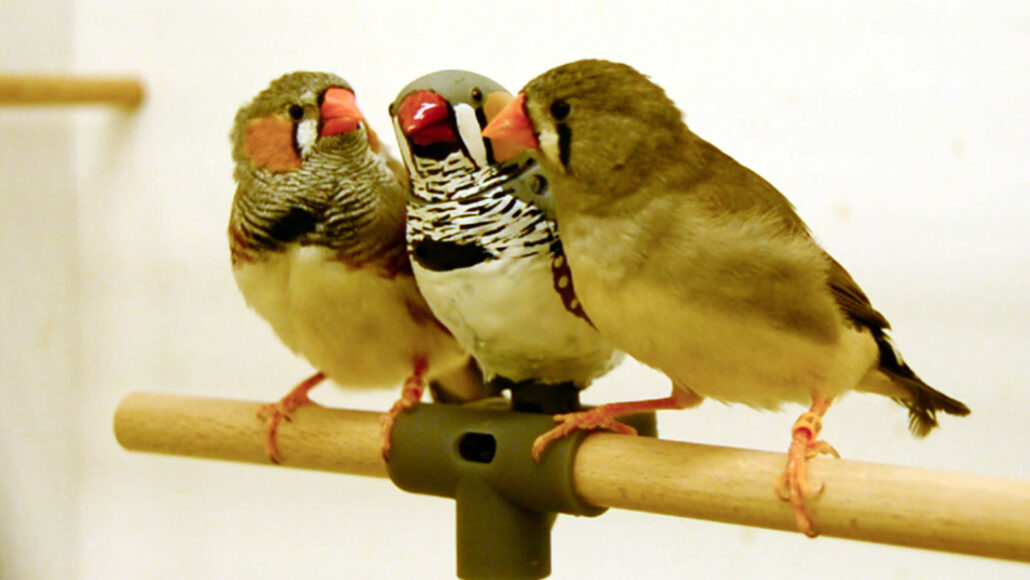Questions for ‘Meet robots on a mission to help birds’

RoboFinch, a robotic singing tutor for birds, sits on a perch between two real zebra finches, a male (left) and a female (right). RoboFinch’s designers used coils from toy birds to make the beak chatter and head swivel.
Ralph Simon